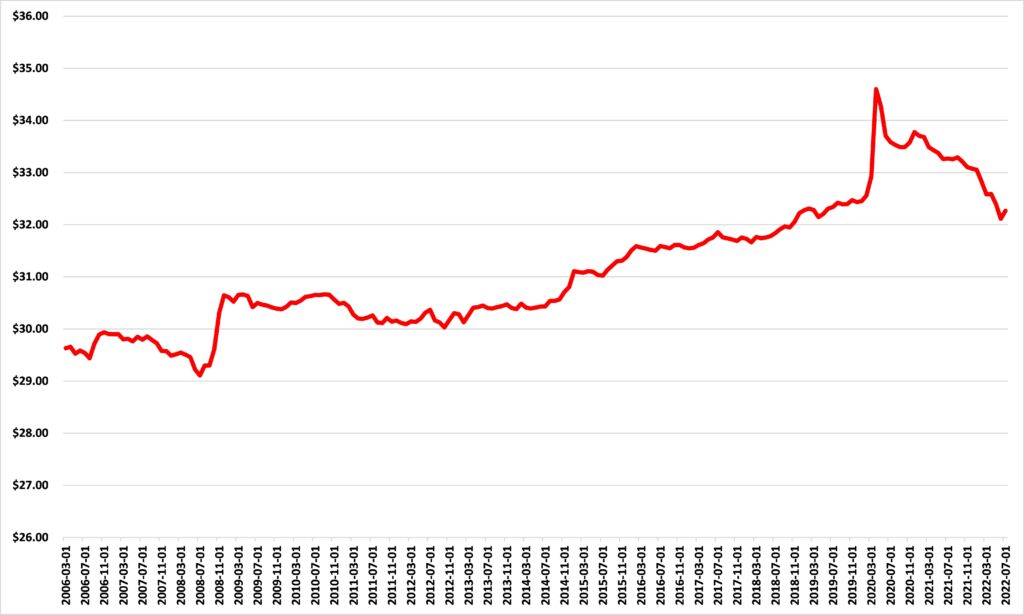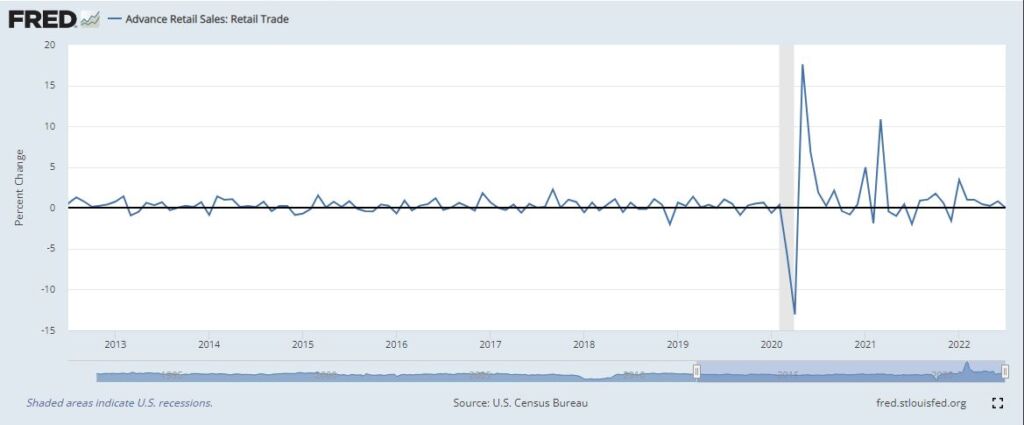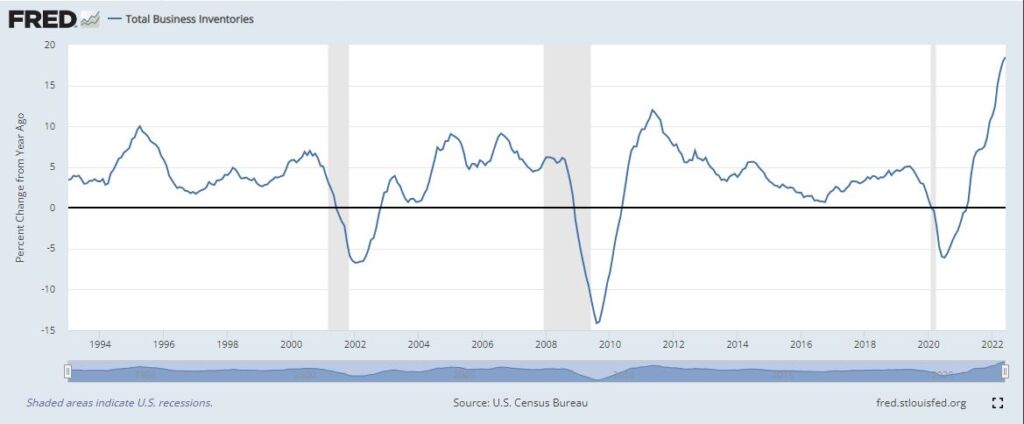What next for the U.S. economy?
The Gross Domestic Product of the United States shrank in real terms for the first two quarters of this year. Very often, that would be called a recession, but not, it seems, anymore. Indeed, strong jobs numbers have caused many observers to dismiss talk of a recession. What path is the economy likely to take?
Real incomes are falling
Let us start with the fact that people’s incomes are falling in real, inflation adjusted terms. Earlier this month, the Bureau of Labor Statistics (BLS) announced that:
Real average hourly earnings decreased 3.0 percent, seasonally adjusted, from July 2021 to July 2022.
Wages are up in nominal terms, but prices are rising at an even faster rate — the elevated rate of inflation — so real wages are falling. Figure 1 shows that while the average hourly wage — $32.27 — was at an all time high in July, 2022, this was lower, thanks to inflation, than it was in June, 2019.
Figure 1: Real average hourly earnings

People buy less
It follows that with reduced real incomes people will buy less, and there are some anecdotal indications that this is already happening. Fox 9 reported recently that Tyson is raising prices of chicken as demand shifts from expensive beef cuts and that ‘Rich’ people are reportedly heading to Applebees and IHOP in search of more affordable meals.
And data seem to be bearing this out. Earlier this month the Commerce Department announced that retail sales did not increase from June to July. As Figure 2 shows, this is not unusual in itself, but it is a source of concern when we consider how much inventory businesses have to shift.
Figure 2

Inventory piles up
If people are buying less then, obviously, businesses will sell less. Again, data seem to bear that out.
Figure 3 shows that Total Business Inventories increased by 18.5% in the year to June, the steepest spike since at least 1993. Businesses have stuff piling up unsold.
Figure 3

Businesses cut prices and cancel orders
If businesses are holding large stocks of inventory – and doing so costs them money – they will need to run those stocks down. They have two ways of doing so: selling what they have and not adding to it with new purchases.
Earlier this month, Fox Business reported that Walmart had:
…lowered its profit outlook for the second quarter and the full year as soaring inflation takes its toll on the retail giant.
The company announced that it expects adjusted earnings per share for Q2 to decline to around 8% or 9%, and drop to the 11% to 13% range for fiscal year 2023.
Walmart said in its release that double-digit food inflation is higher than it was at the end of last quarter, noting that “this is affecting customers’ ability to spend on general merchandise categories and requiring more markdowns to move through the inventory, particularly apparel.” [Emphasis added]
Kare 11 reports:
Target reported solid sales for the fiscal second quarter, but profits plunged nearly 90% after the retailer was forced to slash prices to clear unwanted inventories of clothing, home goods and other discretionary items.
In early June, Target warned that it was canceling orders from suppliers and aggressively cutting prices because of a pronounced spending shift by Americans who, as the pandemic eased. [Emphasis added]
Suppliers cut production
When businesses cut orders their suppliers have to reduce their production and here is where we might find ourselves unequivocally in a recession, because if they have to cut production they will also lay off workers, denting those blockbuster jobs numbers.
What are the alternatives?
I think each of these steps follows fairly logically from the other with the ultimate destination, unfortunately, being a recession. If there are breaks in this chain which permit for a different outcome, I would be happy to hear them.